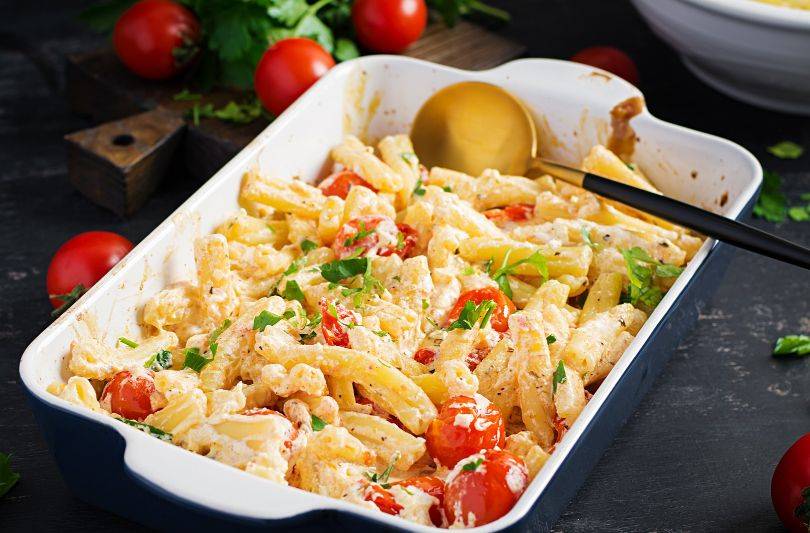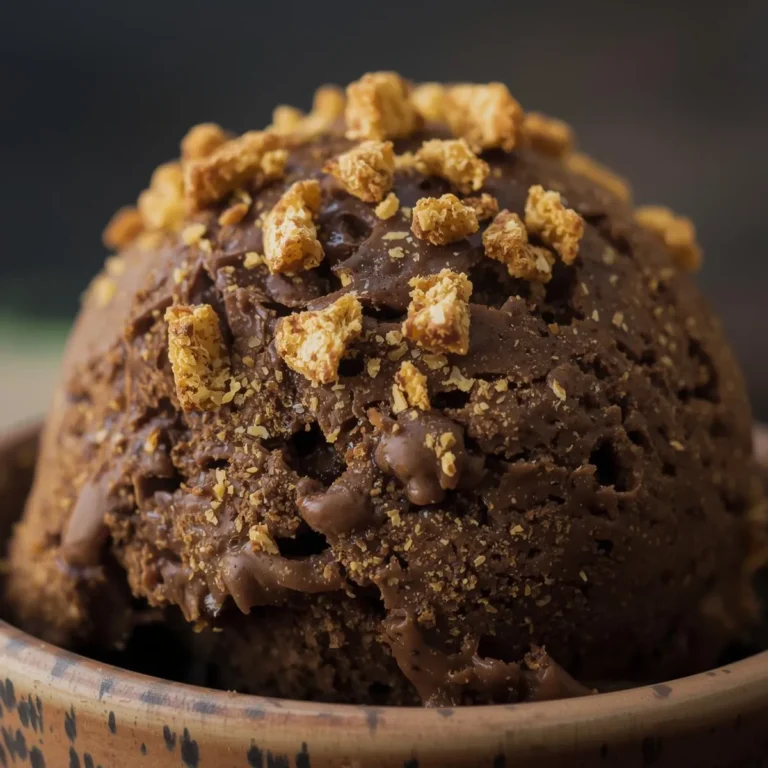Introduction to Extending Pasta Salad Shelf Life
When it comes to enjoying a delicious and healthy pasta salad, understanding its shelf life is crucial. The pasta salad shelf life in your fridge is a key factor in ensuring both the taste and safety of this popular dish. In this guide, we’ll explore essential tips and practices for maximizing the freshness of your pasta salad, ensuring it remains delightful for every meal.
How Long is Pasta Salad Good for in the Fridge?
The pasta salad shelf life in the fridge largely depends on various factors, including the ingredients used and how it’s stored. Generally, a well-stored pasta salad shelf life can last between 3 to 5 days. Let’s delve into the factors that affect its longevity and the general guidelines to follow
Ingredients and Preparation
- Pasta: Use any type of pasta. Cook it al dente to prevent it from becoming mushy.
- Vegetables: Add a variety of vegetables for color and nutrition. Make sure they are fresh and well washed.
- Protein (Optional): Include cooked meats, cheese, or beans for added protein.
- Dressing: Oil-based dressings preserve better than mayonnaise-based ones, which can spoil more quickly.
Cooling
- After cooking the pasta, cool it quickly to stop the cooking process and to prepare it for refrigeration. Rinse it under cold water and drain well.
Mixing Ingredients
- Combine the pasta, vegetables, and any additional ingredients while the pasta is slightly warm. This helps the flavors to meld together.
Adding Dressing
- If using an oil-based dressing, you can mix it in before refrigeration. For mayonnaise-based dressings, consider adding them just before serving to reduce the risk of spoilage.
Refrigeration
- Store the pasta salad in a sealed container in the refrigerator.
- It’s best consumed within 3-5 days. The exact time can depend on the ingredients used.
The Basics of Pasta Salad
Pasta salad is a fantastic dish that can be enjoyed in various ways. Whether you’re looking for speedy recipes for healthy eating, pasta salad can be a nutritious and flavorful option. It’s not only easy to make but also perfect for meal prepping and picnics.
Creative Ingredients and Flavors
The beauty of pasta salad lies in its versatility. You can experiment with different ingredients, from vegetables to proteins, to create a dish that’s both nutritious and satisfying. For those who love experimenting in the kitchen, exploring easy and delicious chicken recipes can provide inspiration for adding protein to your pasta salad.
Perfect Pairings
Pasta salad pairs wonderfully with a variety of dishes. If you’re planning a full meal, consider exploring creative movie night dinner ideas for complementary dishes that will elevate your dining experience.
Safety Tips
- Avoid Cross-Contamination: Use clean utensils and avoid mixing with other foods.
- Temperature Control: Keep the pasta salad refrigerated until it’s time to serve. Don’t leave it out at room temperature for more than 2 hours (1 hour if the temperature is above 90°F/32°C).
- Leftovers: If the salad has been left out for too long, it’s safer to discard it.
Serving
- Serve the pasta salad chilled. Stir it well before serving, as the dressing can settle at the bottom.
Variations
- There are countless variations of pasta salad. Experiment with different ingredients like sundried tomatoes, olives, fresh herbs, or different types of cheese.
How Long is Pasta Salad Good for in the Fridge?
Pasta salad typically remains fresh and safe to eat for about 3 to 5 days when you store it properly in the refrigerator. However, this duration can vary slightly based on the ingredients and the storage method. Here are some important points to keep in mind:
- Ingredients’ Impact: The type of ingredients you use in the pasta salad can affect its shelf life. For example, salads with dairy-based or mayonnaise dressings, or those containing cooked meats, might not last as long as those with simple oil-based dressings and no meat.
- Proper Preparation and Storage:
- Make sure to cool the pasta quickly after cooking and before adding other ingredients.
- Store the salad in a clean, airtight container to reduce exposure to air and contaminants.
- Maintain Refrigeration Temperature: It’s crucial to keep your refrigerator at or below 40°F (4°C). This temperature slows down bacterial growth, helping to preserve the freshness and safety of the salad.
- Mindful Handling: Each time you serve the salad, it gets exposed to warmer temperatures and potential contaminants. Therefore, it’s best to minimize the time the salad stays at room temperature, ideally not exceeding 2 hours (or 1 hour if the temperature is above 90°F/32°C).
- Perform a Sensory Check: Always check for any off-odors, unusual flavors, or visible signs of spoilage like mold before consuming. If you have any doubts, it’s safer to throw the salad away.
- Consider the Dressing: Salads dressed with mayonnaise-based or dairy-based dressings may have a shorter fridge life due to these ingredients’ quicker spoilage rate. On the other hand, salads with vinegar or oil-based dressings might last a bit longer.
- Be Cautious with Add-ins: If you’ve added ingredients that spoil quickly, like hard-boiled eggs or certain seafood, the salad might not last as long.
Proper Storage Techniques for Pasta Salad
Storing pasta salad correctly is crucial for maintaining its freshness, flavor, and safety. Here are some effective techniques for proper storage:
1. Cooling the pasta salad shelf life
- After cooking the pasta, cool it rapidly. Rinse it under cold water and drain it well. This step stops the cooking process and prepares the pasta for safe storage.
2. Mixing Ingredients While Cool
- Combine the cooked, cooled pasta with other ingredients like vegetables, proteins, and herbs. Ensure these ingredients are also at a cool temperature to prevent bacterial growth.
3. Choosing the Right Container
- Use a clean, airtight container for storage. This helps to keep out air and contaminants, and also preserves the moisture and flavor of the salad.
4. Adding Dressing Wisely
- If your salad uses an oil-based dressing, you can mix it in before refrigeration. For mayonnaise-based dressings, consider adding them just before serving, as they can spoil more quickly.
5. Refrigeration
- Refrigerate the pasta salad immediately after preparation. Keep the refrigerator temperature at or below 40°F (4°C). This slows down bacterial growth and keeps the salad fresh.
6. Avoiding Cross-Contamination
- Always use clean utensils when serving the pasta salad. Avoid using the same utensils for different dishes, especially raw foods.
7. Stirring Before Serving
- Before serving, give the pasta salad a good stir. This helps redistribute any dressing or ingredients that may have settled at the bottom.
8. Monitoring Shelf Life
- Generally, consume the pasta salad within 3 to 5 days. Be mindful of the ingredients used, as some may shorten this timeframe.
9. Serving and Returning to Fridge
- When serving, only take out the amount you plan to use. Return the rest to the refrigerator promptly. Avoid leaving the pasta salad at room temperature for more than 2 hours (1 hour in hot weather).
10. Checking for Spoilage
- Regularly check for any signs of spoilage like off-smells, mold, or a slimy texture. If in doubt, it’s safer to discard the salad.
The Role of Dressings in Pasta Salad Longevity
The type of dressing used in pasta salad plays a significant role in determining its longevity and overall shelf life. Dressings can affect both the flavor and the safety of the salad during storage. Here’s an overview of how different dressings impact pasta salad longevity:
Oil-Based Dressings
- Longer Shelf Life: Oil-based dressings, such as vinaigrettes, generally allow for a longer shelf life. The acidic components (like vinegar or lemon juice) in these dressings can help inhibit bacterial growth.
- Preservation of Texture: These dressings don’t penetrate the pasta as deeply, helping to maintain the texture of the pasta over time.
- Flavor Development: Oil-based dressings can meld well with other ingredients, allowing flavors to develop and enhance during refrigeration.
Mayonnaise-Based Dressings
- Shorter Shelf Life: Mayonnaise-based dressings often lead to a shorter shelf life for pasta salads. This is due to the presence of eggs and the potential for quicker spoilage, especially if not kept at a consistent, cool temperature.
- Risk of Bacterial Growth: These dressings can create an environment that’s more conducive to bacterial growth if the salad is not properly refrigerated.
- Texture Considerations: Mayonnaise can make the pasta more creamy, but it can also become heavy or soggy if stored for an extended period.
Creamy Dressings
- Varied Impact on Shelf Life: Creamy dressings, like those made with yogurt or sour cream, can have a varied impact on shelf life. While they may not last as long as oil-based dressings, they can be more stable than mayonnaise-based ones.
- Temperature Sensitivity: These dressings are sensitive to temperature fluctuations, making consistent refrigeration crucial.
General Tips for Dressing and Pasta Salad Longevity
- Add Dressing Before Serving: For longer storage, consider adding the dressing to the pasta salad just before serving, especially if using mayonnaise-based or creamy dressings.
- Proper Storage: Regardless of the dressing type, always store pasta salad in the refrigerator at or below 40°F (4°C).
- Sensory Checks: Regularly check the salad for any signs of spoilage, such as off-odors or changes in texture.
- Hygiene Practices: Maintain good hygiene practices to prevent cross-contamination, which can affect both the safety and longevity of the salad.
Eating expired pasta salad can pose several health risks, primarily due to the potential growth of harmful bacteria and the deterioration of ingredients. It’s important to understand these risks to ensure food safety. Here are the key health concerns associated with consuming expired pasta salad:
1. Food Poisoning
- Bacterial Growth: Pasta salad, especially those with mayonnaise-based or creamy dressings, can become a breeding ground for bacteria like Salmonella, E. coli, and Listeria if not stored properly or kept too long.
- Symptoms: Consuming contaminated pasta salad can lead to food poisoning, with symptoms including nausea, vomiting, diarrhea, abdominal cramps, and fever.
2. Staphylococcus Aureus Toxin
- Toxin Production: This bacterium can produce toxins in foods that are not refrigerated properly. These toxins are heat-resistant and may not be destroyed even if the salad is reheated.
- Rapid Onset: Symptoms of Staphylococcus aureus food poisoning can appear quickly, often within a few hours of consumption, and include severe nausea, vomiting, and stomach cramps.
3. Botulism
- Rare but Serious: In rare cases, if the pasta salad has been stored improperly (e.g., in an anaerobic environment), it can lead to the growth of Clostridium botulinum, which causes botulism, a serious and potentially fatal illness.
- Symptoms: These include blurred vision, difficulty swallowing, muscle weakness, and respiratory problems.
4. Mold and Fungal Growth
- Visible Spoilage: Mold can develop on ingredients in the salad, especially if it’s been stored for too long. Some molds can produce mycotoxins, which are harmful if ingested.
- Allergic Reactions: In addition to potential toxins, molds can cause allergic reactions or respiratory problems in some individuals.
5. Chemical Changes
- Rancidity: Oils in dressings can become rancid over time, leading to unpleasant tastes and potentially harmful free radicals.
6. Cross-Contamination
- Secondary Contamination: If expired pasta salad comes into contact with other foods, it can lead to cross-contamination, spreading bacteria to otherwise safe foods.
Prevention Tips
- Observe Expiry Dates: Always adhere to the use-by or expiry dates on pre-packaged ingredients.
- Proper Storage: Refrigerate pasta salad promptly and keep it at or below 40°F (4°C).
- Sensory Checks: Look for signs of spoilage like off-smells, changes in texture, or visible mold before consuming.
- Discard Doubtful Food: If in doubt about the freshness or safety of the salad, it’s best to discard it.
The Do’s and Don’ts of Pasta Salad Storage
Storing pasta salad correctly is essential for maintaining its freshness, flavor, and safety. Here are some key do’s and don’ts to keep in mind:
Do’s of Pasta Salad Storage
- Do Cool Pasta Quickly: After cooking, rinse the pasta under cold water to stop the cooking process and reduce the risk of bacterial growth.
- Do Use Airtight Containers: Store the pasta salad in clean, airtight containers to minimize exposure to air and contaminants.
- Do Refrigerate Promptly: Place the pasta salad in the refrigerator as soon as possible after preparation, ideally within two hours.
- Do Keep the Fridge Temperature Right: Ensure your refrigerator is set at or below 40°F (4°C) to slow down bacterial growth.
- Do Add Dressing Wisely: If using a mayonnaise-based or creamy dressing, consider adding it just before serving, as these dressings can spoil faster.
- Do Check for Freshness: Before eating, always check the pasta salad for any signs of spoilage, like off-odors, unusual taste, or visible mold.
- Do Stir Before Serving: Give the pasta salad a good stir before serving to redistribute flavors and dressing.
- Do Practice Good Hygiene: Use clean utensils to serve and handle the pasta salad to prevent cross-contamination.
Don’ts of Pasta Salad Storage
- Don’t Leave Out at Room Temperature: Avoid leaving pasta salad out at room temperature for more than 2 hours (1 hour in hot weather).
- Don’t Overlook Ingredient Shelf Life: Be aware that the shelf life of the pasta salad can be impacted by the ingredients used. Some ingredients spoil faster than others.
- Don’t Use Old or Spoiled Ingredients: Never use ingredients that are past their expiration date or show signs of spoilage.
- Don’t Forget to Seal Tightly: Always ensure the container is sealed tightly to keep out moisture and other contaminants.
- Don’t Ignore Storage Time: Even with proper refrigeration, don’t keep pasta salad for more than 3-5 days.
- Don’t Mix Old and New Batches: Avoid mixing freshly made pasta salad with an older batch, as this can introduce bacteria and spoil the fresh salad.
- Don’t Freeze Pasta Salad: Freezing pasta salad can significantly alter the texture and quality of the pasta and other ingredients, making it less enjoyable when thawed.
Reviving Day-Old Pasta Salad: Is It Safe?
Reviving day-old pasta salad and ensuring its safety largely depends on how it was stored and the ingredients it contains. Generally, if you have stored the pasta salad properly in the refrigerator and it’s only a day old, it should be safe to eat. Here are some considerations for reviving and assessing the safety of day-old pasta salad:
Safe Storage is Key
- Refrigeration: The pasta salad should have been refrigerated promptly after being made or served, and kept at a consistent temperature of 40°F (4°C) or below.
- Container: It should have been stored in an airtight container to prevent contamination and moisture loss.
Assessing the Salad
- Visual Check: Look for any signs of mold or unusual colors.
- Smell Test: If the pasta salad has an off or sour smell, it’s best to discard it.
- Taste Test: If it passes the visual and smell tests, taste a small amount. If the flavor seems off, it’s better not to eat it.
Reviving the Salad
- Stirring: Gently stir the pasta salad to redistribute the dressing and flavors.
- Adding Freshness: Consider adding a splash of fresh dressing, a squeeze of lemon, or fresh herbs to brighten up the flavors.
- Temperature: If the salad was made with oil-based dressing, letting it sit at room temperature for a short period (no more than 2 hours) can help the flavors meld. However, be cautious with mayonnaise-based or dairy-based dressings, as these should not stay out of the fridge for long.
Ingredients Matter
- High-Risk Ingredients: If the salad contains ingredients that spoil quickly (like seafood, hard-boiled eggs, or certain dairy products), be extra cautious.
- Dressing Type: Oil-based dressings generally preserve the salad better than mayonnaise or dairy-based dressings, which can spoil more quickly.
When to Avoid
- Extended Room Temperature Exposure: If the pasta salad was left out at room temperature for more than 2 hours (or 1 hour in hot weather), it’s safer to discard it.
- Older than 3-5 Days: Even with proper refrigeration, consuming pasta salad that’s older than 3-5 days can be risky, especially if it contains perishable ingredients.
Freezing Pasta Salad: A Good Idea?
Freezing pasta salad is generally not recommended due to several factors that can affect the quality, texture, and overall taste of the dish. Here’s a breakdown of why freezing pasta salad might not be a good idea:
Texture Changes
- Pasta: After freezing and thawing, pasta often becomes mushy or overly soft, losing its desirable al dente texture.
- Vegetables: Many vegetables used in pasta salads, like cucumbers, tomatoes, and leafy greens, can become waterlogged and limp after being frozen and thawed.
Dressing Issues
- Oil-Based Dressings: These can separate and become grainy when frozen and then thawed.
- Mayonnaise or Dairy-Based Dressings: These dressings tend to split or curdle when frozen, leading to an unappetizing texture and consistency.
Safety Concerns
- While freezing can preserve the food from bacterial growth, the thawing process needs careful handling to avoid bacterial contamination, especially for salads containing perishable ingredients like meat or dairy.
Flavor Loss
- Freezing can dull the flavors in the salad, requiring additional seasonings or dressings to revive the taste after thawing.
Alternative Preservation Methods
- Refrigeration: It’s best to store pasta salad in the refrigerator if you plan to consume it within a few days.
- Ingredient Separation: If you anticipate the need for longer storage, consider storing the cooked pasta and other ingredients separately in the refrigerator and combining them with the dressing just before serving.
Conclusion: Mastering the Art of Pasta Salad Storage shelf life
Mastering the art of pasta salad storage is essential for enjoying this versatile dish at its best, while also ensuring it remains safe and delicious. Here’s a comprehensive summary of the key tips for optimal pasta salad storage:
1. Prompt Refrigeration
- Firstly, it’s crucial to refrigerate the pasta salad as soon as possible after preparation, ideally within two hours.
2. Proper Cooling of pasta salad shelf life
- Secondly, make sure to cool the cooked pasta quickly under cold water. This step stops the cooking process and prepares it for safe storage.
3. Use Airtight Containers
- Thirdly, storing the salad in clean, airtight containers is important to minimize exposure to air and potential contaminants.
4. Consider Dressing Separately
- Additionally, for a longer shelf life, it’s advisable to store the dressing separately and mix it in just before serving, especially if it’s mayonnaise or dairy-based.
5. Maintain Consistent Refrigeration
- Furthermore, keeping your refrigerator at or below 40°F (4°C) is essential to slow down bacterial growth.
6. Mind the Ingredients
- Also, be aware that certain ingredients, like seafood, hard-boiled eggs, or dairy products, can affect the salad’s longevity.
7. Regular Sensory Checks
- Moreover, before consuming, always check for any signs of spoilage such as off-odors, unusual tastes, or visible mold.
8. Avoid Cross-Contamination
- Importantly, use clean utensils when serving the pasta salad to prevent cross-contamination.
9. Limit Room Temperature Exposure
- Additionally, don’t leave the pasta salad out at room temperature for more than 2 hours (1 hour in hot weather).
10. Consume Within Safe Timeframe
- Lastly, it’s best to consume the pasta salad within 3-5 days of preparation.
11. Avoid Freezing
- Finally, freezing is not recommended due to the potential degradation in texture and flavor.






